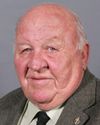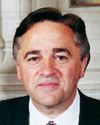Agreed.
(Motion withdrawn.)
House of Commons Hansard #225 of the 35th Parliament, 1st Session. (The original version is on Parliament's site.) The word of the day was development.
MotionsRoutine Proceedings
4:05 p.m.
Some hon. members
Agreed.
(Motion withdrawn.)
Committees Of The HouseRoutine Proceedings
September 18th, 1995 / 4:05 p.m.
Kingston and the Islands Ontario
Liberal

Peter Milliken LiberalParliamentary Secretary to Leader of the Government in the House of Commons
Mr. Speaker, I would move that we dispense with reading the 84th report of the Standing Committee on Procedure and House Affairs, which I presented to the House a few moments ago. I believe you would find unanimous consent that the following motion be put to the House and adopted immediately without debate:
That the 84th report of the Standing Committee on Procedure and House Affairs presented to the House earlier this day be concurred in.
(Motion agreed to.)
Committees Of The HouseRoutine Proceedings
4:05 p.m.
Liberal

Peter Milliken Liberal Kingston and the Islands, ON
Mr. Speaker, I have another consent motion to put to the House.
I move:
That notwithstanding Standing Order 106(1), the several standing committees may meet for the purpose of electing a chair commencing at 9 a.m. tomorrow, September 19, 1995.
(Motion agreed to.)
PetitionsRoutine Proceedings
4:05 p.m.
Liberal

Paul Szabo Liberal Mississauga South, ON
Mr. Speaker, pursuant to Standing Order 36, I wish to present a petition that has been circulating all across Canada. This particular petition has been signed by a number of Canadians from Alberta, Saskatchewan, and the Yukon.
The petitioners would like to draw to the attention of the House that managing the family home and caring for preschool children is an honourable profession, which has not been recognized for its value to our society. They also state that the Income Tax Act discriminates against families who make the choice to provide care in the home to preschool children, the disabled, the chronically ill and the aged.
The petitioners therefore pray and call upon Parliament to pursue initiatives to eliminate tax discrimination against families who decide to provide care in the home for preschool children, the disabled, the chronically ill or the aged.
PetitionsRoutine Proceedings
4:05 p.m.
Reform

Jim Hart Reform Okanagan—Similkameen—Merritt, BC
Mr. Speaker, I rise today pursuant to Standing Order 36 to present a petition. This petition not only bears the signatures of constituents from my riding of Okanagan-Similkameen-Merritt but also signators from across this country, including places such as Bath, Ontario, Seeleys Bay, Lansdowne, Ontario, and also Victoria, British Columbia.
The petitioners draw to the attention of the House that the Bloc Quebecois has publicly dedicated itself to a disloyal objective, that being the secession of the province of Quebec from the Canadian federation. Therefore, the petitioners call on Parliament to preserve unity, parliamentary tradition, and to protect the rights of all people of Canada by prevailing upon the Speaker of the House of Commons to recognize the Reform Party of Canada as the official opposition during the remainder of the 35th Parliament of Canada.
It is not only my duty but my privilege to present this petition on behalf of Canadians.
PetitionsRoutine Proceedings
4:10 p.m.
Reform

Myron Thompson Reform Wild Rose, AB
Mr. Speaker, pursuant to Standing Order 36, I have the honour to present a petition today on behalf of constituents who live in the area of Crossfield, Alberta.
This petition calls for a loyal opposition in the House of Commons. The petitioners call on Parliament to preserve Canadian unity, parliamentary tradition, and to protect the rights of all the people of Canada by prevailing upon the Speaker of the House of Commons to recognize the Reform Party of Canada as the official opposition during the remainder of the 35th Parliament.
PetitionsRoutine Proceedings
4:10 p.m.
Reform

Ed Harper Reform Simcoe Centre, ON
Mr. Speaker, pursuant to Standing Order 36 I am pleased to present two petitions today.
The first group of petitioners is extremely concerned about including the phrase sexual orientation in federal legislation. They believe this sets a very dangerous precedent for society.
The second group of petitioners requests that the Government of Canada not amend the human rights act to include the phrase sexual orientation. The petitioners fear that such an inclusion could lead to homosexuals receiving the same benefits and societal privileges as married couples.
Questions On The Order PaperRoutine Proceedings
4:10 p.m.
Kingston and the Islands Ontario
Liberal

Peter Milliken LiberalParliamentary Secretary to Leader of the Government in the House of Commons
Mr. Speaker, the following questions will be answered today: Nos. 172, 184, 189, 194, 202, 203, 206, 207, 211, 212, 213, 217, 219, and 220.
Question No. 172-
Questions On The Order PaperRoutine Proceedings
4:10 p.m.
Reform

Chuck Strahl Reform Fraser Valley East, BC
With regard to the special retirement allowance for deputy ministers approved by Treasury Board on July 14, 1988, ( a ) how many individuals are currently benefitting from this allowance and (i) how much pension is each individual receiving from the federal government per annum, using figures broken down by the amount of the allowance and the amount of the remainder of their pension, (ii) what is the list of their names, (iii) what was the last employment position they held before receiving the Allowance, ( b ) how many individuals will be eligible to receive the special retirement allowance after the current fiscal year and (i) what is the list of their names, (ii) what is their employment position, (iii) how much will they be eligible to receive, using figures broken down by the amount of the allowance and the amount of the remainder of their pension, and since July 14, 1988, ( c ) how many deputy ministers have been recruited directly from the private sector, including crown corporations and what positions were they recruited from?
Questions On The Order PaperRoutine Proceedings
4:10 p.m.
Etobicoke—Lakeshore Ontario
Liberal

Jean Augustine LiberalParliamentary Secretary to Prime Minister
Twenty individuals are benefiting from the allowance. The amount of the pension received by each individual cannot be released since it is considered personal information in accordance with the Privacy Act. For the same reasons, the names of individuals in receipt of a pension from the federal government cannot be released, nor the amounts.
It is not possible to determine how many people will be eligible to receive the special retirement allowance at a future date for example, after the current fiscal year. Deputy ministers serve at pleasure and they must retire to become eligible; the decision to retire is not always communicated ahead of time. Furthermore,
eligibility for pension varies in accordance with age and service at the date of retirement.
Since 1988 the number of deputy minister positions has been reduced by 19 per cent and one individual has been recruited directly from the private sector to a deputy minister position; he was the CEO at a consulting firm. Four other individuals appointed deputy ministers, since July 1988 had recent experience outside the federal public service.
Question No. 184-
Questions On The Order PaperRoutine Proceedings
4:10 p.m.
Liberal

Charles Caccia Liberal Davenport, ON
What is the amount, if any, of direct and indirect federal subsidies received by MacMillan Bloedel Ltd. since 1950?
Questions On The Order PaperRoutine Proceedings
4:10 p.m.
Kingston and the Islands Ontario
Liberal

Peter Milliken LiberalParliamentary Secretary to Leader of the Government in the House of Commons
I am informed as follows:
Human Resources Development Canada (Since 1985*)
Canadian Job Strategy Program-$1,667,036.00
Industry Canada (Since 1980*)
Industry & Labour Adjustment Program-$1,300,000.00 Industrial & Regional Development Program-953,000.00 Sector Campaign-Forest Products R&D/Innovation-3,829,303.00 Advanced Manufacturing Technology Application Program-15,000.00
National Research Council (Since 1966*)
Industrial Research Assistance Program-$4,268,000.00
Natural Resources Canada (Since 1989*)
Forestry Program-$638,010.00
Western Economic Diversification Canada (Since 1984*)
Western Diversification Program-$3,449,461.00
Industrial and Regional Development Program-866,561.00 (Former Department of Regional Industrial Expansion)
Enterprise Development Program-3,863,263.85 (Former Department of Industry, Trade and Commerce)
Regional Development Incentives Program-2,401,708.40 (Former Department of Regional Economic Expansion)
*Date from which records are still available from the financial system.
Question No. 189-
Questions On The Order PaperRoutine Proceedings
4:10 p.m.
Reform
Ted White Reform North Vancouver, BC
With regard to the rate of recidivism for persons convicted of first degree murder, second degree murder or manslaughter over the past 30 years, what has the government determined to be the number of those persons so convicted who, ( a ) reoffend, are formally charged and subsequently sentenced on a charge of first degree murder or, ( b ) reoffend, are formally charged and subsequently sentenced on a charge of second degree murder or, ( c ) reoffend, are formally charged and subsequently sentenced on a charge of manslaughter?
Questions On The Order PaperRoutine Proceedings
4:10 p.m.
Windsor West Ontario
Liberal

Herb Gray LiberalLeader of the Government in the House of Commons and Solicitor General of Canada
In so far as the Ministry of the Solicitor General of Canada and its agency are concerned, the answer is as follows regarding the National Parole Board:
Prior to July 1976, murder was separated into capital and non-capital murder. The category of non-capital murder was established on January 4, 1968. Prior to that date all murder was capital murder. The categories of first and second degree murder were created on July 26, 1976 when capital punishment was abolished.
A review of statistical studies which examined the outcome of released murder and manslaughter offenders indicated that 19 offenders previously convicted of a homicide offence, manslaughter or murder,were convicted and reincarcerated for a second homicide between 1920 and 1990. This research revealed that six offenders were convicted of a second murder. Thirteen offenders originally convicted of manslaughter were reincarcerated for another homicide offence, five for murder offences and eight for a second manslaughter offence. The following is a summary of the findings of these studies.
On follow up of offenders previously convicted of murder, the National Parole Board 1990 followed murder offenders released between January 1, 1975 and March 31, 1990 to July 31, 19901. This study indicated that five persons originally convicted of a homicide offence were reincarcerated for a second homicide offence.
There were 752 releases of murder offenders. Of these, 75 or 10 per cent had been convicted of capital murder, 513 or 68.2 per cent of non-capital murder, five or 0.7 per cent of first degree and 159 or 21.1 per cent of second degree murder.
Five-0.7 per cent of 752 releases-released murder offenders were reincarcerated for a second murder while on full parole. All five had originally been convicted of non-capital murder. Of the five, three were subsequently convicted of first degree and two of second degree murder.
Statistic Canada 1976 reported on a study which followed a sample of 232 murder offenders released on parole between 1920 and July 1975.
One murder offender-0.4 per cent of a total of 232-was convicted of a second murder.
On follow up of offenders previously convicted of manslaughter the National Parole Board's 1990 follow up study to July 31, 1990 of manslaughter offenders released between January 1, 1975 and
March 31, 1990 revealed that 11 persons originally convicted of manslaughter were returned to custody for a second homicide offence.
There were 2,950 releases of offenders convicted of manslaughter. Of these, 1,407 were released on full parole and 1,543 on statutory release2.
Five-0.4 per cent of a total of 1,407 releases of-those released on full parole were convicted of a second homicide offence: one for second degree murder and four for manslaughter.
Six-0.4 per cent of a total of 1,543-offenders released on statutory release were convicted of a second homicide offence: two for first degree murder, two for second degree murder and two for manslaughter.
Statistics Canada 1976 reported on research that examined manslaughter offenders who were involved in a second homicide offence between 1961 and 1974.
Two offenders originally convicted of manslaughter and released on parole were subsequently reincarcerated for a second manslaughter offence between 1961-1974.
Bibliography: National Parole Board 1990 Follow-up of Manslaughter and Murder Offenders On Conditional Release between January 1, 1975 and March 31, 1990 as of July 31, 1990, unpublished; Statistics Canada June 1976 Homicide in Canada: A Statistical Synopsis, Ottawa: The Minister of Industry, Trade and Commerce, Catalogue 85-505E.
1 The length of the follow up period will vary from 15 years, for those released in 1975, to a few months for those who left prison in 1990.
2 prior to 1992 statutory release was called mandatory supervision.
Question No. 194-
Questions On The Order PaperRoutine Proceedings
4:10 p.m.
Reform

Philip Mayfield Reform Cariboo—Chilcotin, BC
Since the end of the private contract for operating the Loran C Station at Riske Creek, B.C. and the takeover by the Canadian Coastguard in November 1994, ( a ) how many public service personnel have been relocated to Riske Creek, and what are their rank and where were they transferred from, ( b ) are any new personnel to be deployed or hired at Riske Creek after April 1, 1995, ( c ) how many of the existing staff have been released, ( d ) what new furniture and equipment has been provided for the station since September 1994, and at what cost, ( e ) do any personnel commute to Riske Creek from Vancouver and if so, how frequently do they commute and at what cost, ( f ) how many hours of overtime by staff members has been incurred and at what dollar cost, ( g ) how much money, broken down by expenditure, has been budgeted for the total operation for the year 1995/96 for the station, ( h ) what was the cost of operating the station since the November 1994 takeover, up to and including March 31, 1995?
Questions On The Order PaperRoutine Proceedings
4:10 p.m.
Humber—St. Barbe—Baie Verte Newfoundland & Labrador
Liberal

Brian Tobin LiberalMinister of Fisheries and Oceans
Two public service personnel have been relocated from Vancouver area to Williams Lake. They are one EL-06 and EL-07, EL-Electronics. There are plans to hire one part time clerical staff for Riske Creek after April 1, 1995. No staff has been released at Riske Creek Loran C station. Modular office furniture has been purchased at a cost of $11,406.23 in lieu of building renovations. No personnel commute from Vancouver to Riske Creek at government expense. Overtime for period November 1994 to end of April 1995 was 167.5 hours at a cost of $11,959.57.
The following is the 1995/96 budget for the station:
Salary-452.3K Overtime-57.2K Other personnel 7.3K Travel-4.3K Fuel-7.3K Other costs-157.1K Total-685.5K
This budget is in accordance with the cost figures utilized in the cost benefit study which determined that it was more cost effective to operate the Loran C station at Williams Lake with the Canadian Coast Guard, CCG personnel than using a contractor. The 685.5K budget is made up of the two following main elements:
Personnel costs-516.8K Other costs-168.7K
Personnel costs, 516.8K are those to be compared to the contract cost, 680K, and are within the cost benefit analysis range costs of 514K to 574K. The other costs, 168.7K, are related to the maintenance and repair of the equipment and had also to be paid by CCG when the station was operated by a contractor. The cost of operating the station from the November 1994 takeover to March 31, 1995 was $253,287.00.
Question No. 202-
Questions On The Order PaperRoutine Proceedings
4:10 p.m.
Reform

Bill Gilmour Reform Comox—Alberni, BC
What are the individual and total costs incurred by the deputy minister of the environment regarding office renovations, furniture, vehicles and sundries from October 20, 1994, to the present?
Questions On The Order PaperRoutine Proceedings
4:10 p.m.
Hamilton East Ontario
Liberal

Sheila Copps LiberalDeputy Prime Minister and minister of the Environment
The following lists the individual and total costs incurred by the deputy minister of the environment regarding office renovations, furniture, vehicles and sundries from October 20, 1994 to the present.
Question No. 203-
Questions On The Order PaperRoutine Proceedings
4:10 p.m.
Lethbridge Alberta
Reform

Ray Speaker ReformLethbridge
Given the economic projections laid out in the February 1995 budget, ( a ) what will the federal debt be in five years and ( b ) what will be the corresponding interest payments per year (based on an interest rate of 8 per cent)?
Questions On The Order PaperRoutine Proceedings
4:10 p.m.
Winnipeg North Centre Manitoba
Liberal
David Walker LiberalParliamentary Secretary to Minister of Finance and Minister responsible for the Federal Office of Regional Development-Quebec
The February 1995 budget presented economic and fiscal projections for 1995-96 and 1996-97. The government has stated it will not be doing medium term projections because of the uncertainties involved. Instead, it is committed to put out two year rolling deficit targets and taking whatever actions are required in order to ensure those targets are met. By doing so the federal government will be moving on a firm path toward the government's ultimate goal of balancing the budget.
Interest costs projections for 1995-96 and 1996-97 were presented in the budget. Interest costs are projected at $49.5 billion for 1995-96 and $50.7 billion for 1996-97.
Question No. 206-
Questions On The Order PaperRoutine Proceedings
4:10 p.m.
Reform

Bill Gilmour Reform Comox—Alberni, BC
What was the total dollar amount direct and indirect, and source of government funding included in the 1995-96 estimates to the western Canada wilderness committee?
Questions On The Order PaperRoutine Proceedings
4:10 p.m.
Kingston and the Islands Ontario
Liberal

Peter Milliken LiberalParliamentary Secretary to Leader of the Government in the House of Commons
From April 1, 1995 to the date of the question, the following departments and agencies have not provided any source of funding to the western Canada wilderness committee: Canadian International Development Agency, Department of Canadian Heritage, Environment Canada, Human Resources Development Canada, National Capital Commission, Natural Resources Canada.
Other departments and agencies have not been requested to provide an answer to this question as they had not provided funding to western Canada wilderness committee in previous years.
Question No. 207-
Questions On The Order PaperRoutine Proceedings
4:10 p.m.
Reform

Bill Gilmour Reform Comox—Alberni, BC
What are the sources and amounts of government funding per annum from 1990 to the present, including the 1995-96 estimates, to Native Trappers School of B.C. Canada and to Fritz Dueck and/or Sigi Dueck of British Columbia?
Questions On The Order PaperRoutine Proceedings
4:10 p.m.
Kingston and the Islands Ontario
Liberal

Peter Milliken LiberalParliamentary Secretary to Leader of the Government in the House of Commons and Solicitor General of Canada
The government has no record of financial assistance having been awarded to the Native Trappers School of B.C. Canada and to Fritz Dueck and/or Sigi Dueck of British Columbia.
Question No. 211-
Questions On The Order PaperRoutine Proceedings
4:10 p.m.
Liberal
Murray Calder Liberal Wellington—Grey—Dufferin—Simcoe, ON
Concerning Lyme disease in Canada, ( a ) how can some areas of Canada be reported as non-endemic when a thorough examination of vectors/hosts for the Lyme disease bacteria has not been conducted, ( b ) why has Lyme disease not been made a national reportable disease, ( c ) what is the total number and location of Lyme disease incidences in Canada, ( d ) what information is provided to health care providers to identify Lyme disease, ( e ) why are there no protocols to force health care officials to report cases of Lyme disease, and ( f ) why doesn't the government provide information for people to protect themselves against the disease?